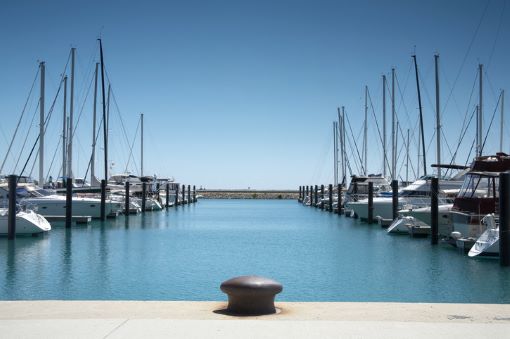A pontoon boat is a different breed of boat that comes with some quirks that can make it a little challenging to dock. Docking a pontoon is a lot like parallel parking a car in that, after you’ve done it a few times, you internalize the size and shape of the vehicle, even though you can’t see it. You’ll also get a feel for how it reacts to throttle and steering input.
Here are some tips for handling a pontoon boat around a dock at the launch ramp, a restaurant or a gas dock, that will help you look like a pro.
7 Easy Steps for Docking a Pontoon Boat
- Prepare your dock lines and fenders before you start approaching the dock.
- Decide what part or side of the dock you'll tie up and adjust your fenders accordingly.
- Pay close attention to the wind, the current, and other boats that may be close by.
- Stand up at the helm to improve your view forward and to port, and have a clear sightline.
- Open the front boarding gate to help gauge your approach.
- Make a slow approach to the dock, bumping the boat in and out of gear as you get close.
- When you are 10 feet away, shift to reverse to arrest your speed.
Explore All Pontoon Boat Brands
Preparation for Docking
Well before approaching the dock, have your fenders in place and your dock lines ready. If you have a crew on board let them know what they can do to help, such as manning the dock lines and being ready to hop off the boat to secure those lines.
If you are not familiar with the dock, make a reconnaissance pass to determine the following:
- How you’ll approach the dock;
- Which side of the boat you’ll be docking on;
- The location of cleats for tying up to the dock;
- And the height of the dock so you can have your fenders adjusted to best protect the boat.
Observe the wind and current. When possible, try to approach a dock into the wind, as this will give you more control over boat speed. Because of its profile, a pontoon is very sensitive to cross winds. Try to gauge that wind as you approach the dock—aim a little upwind to start and you’ll drift into an ideal position without a lot of steering adjustment. This becomes easier with practice and familiarity with the boat.
Enhancing Your Vision
From the helm seat of a pontoon sightlines to the dock are often obstructed by the fence around the deck, and the distance from the helm to the front of the boat. As you get closer to the dock—when you’d really like to see the dock—those sightlines get worse. The elevated helm station offered my many pontoon boat builders raises the seat four to six inches and improves sightlines somewhat, but here are some other tips.
- Stand at the helm. Slide the helm seat all the way back, tilt the steering wheel up and try standing at the helm. This will improve your view forward and to port.
- Ask your guests to clear your sightline. At least have everyone sit down. Better still, move them to the rear seats. Guests standing on the deck forward will just block your view.
- Open the front boarding gate. You’ll be able to better gauge your approach forward if there’s a pier at the head of the slip.
Docking to starboard offers the captain a much better view than docking to port, when that’s an option.
Slow Approach
Always make a slow approach to the dock. You’ll have more time to react and make decisions. Also better to tap the dock than to bang into it with enough force to do some damage.
- As you get close, bump the boat in and our of gear. You want to maintain a slow speed but still have some steering control.
- A pontoon will glide along quite a distance on its own momentum.
- When you are about 10 feet from where you’d like the boat to stop, shift to reverse to arrest your speed.



